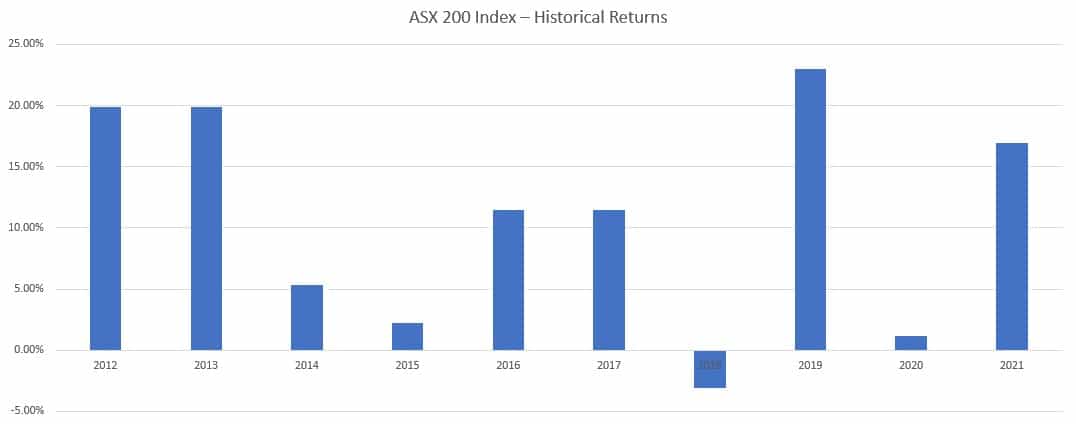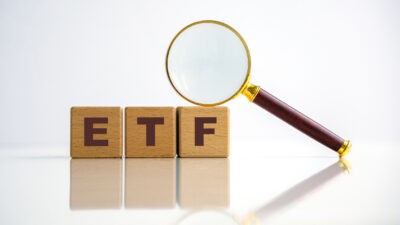In a year like 2022, it can be easy to lose track of the fact that, in most years, ASX shares go up and not down. This year has been a rough one for the S&P/ASX 200 Index (ASX: XJO).
Even after this week's rather spectacular gains, the index remains down by 3.4% year to date on today's numbers at present.
We are in December now, so it is still possible the ASX 200 ekes out a gain for the year. But it's probably going to be a squeaker.
Here at the Fool, it's turning into something of an annual tradition to take a look at the historical returns of the ASX 200 Index over the past decade.
Looking back on the kind of returns ASX shares have given investors over a long period of time can only be a good thing – and it shows just how little the year-to-year fluctuations of the markets can have on the long-term wealth of a prudent investor.
ASX 200 historical returns: 2012-2021
So without further ado, here are the returns of the ASX 200 over the past decade by calendar year. The data comes from S&P Global, the index provider responsible for running the ASX 200 Index. The returns include dividends paid as well:
| Year | Return of ASX 200 |
| 2012 | 19.88% |
| 2013 | 19.88% |
| 2014 | 5.31% |
| 2015 | 2.25% |
| 2016 | 11.45% |
| 2017 | 11.46% |
| 2018 | (3.13%) |
| 2019 | 23.02% |
| 2020 | 1.18% |
| 2021 | 16.97% |
For those readers who love a good graph, fear not. Here is that same data in graph mode:

So this just goes to show exactly how lucrative owning shares can be on a long-term basis. Out of 10 years, just one year of negative returns. That could be two by the end of 2022, but we'll have to wait and see on that one.
Regardless, it is clear that buyers win far more often than sellers, and the ASX 200's trajectory over time is in an upward, if inconsistent, direction.
Time to address the elephant in the room, though. There are no typos in the above data. In a wild and mathematically unlikely coincidence, the returns in 2012 and 2013 are indeed both 19.88%. Ditto with the returns of 2016 and 2017, which are almost identical as well.







